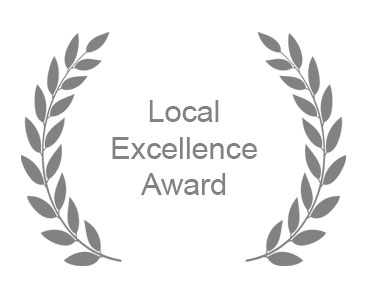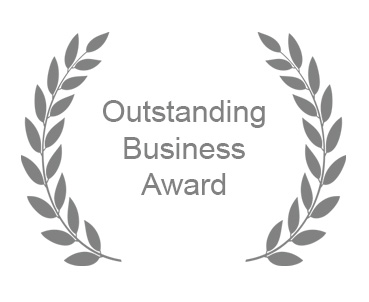Website Accessibility Compliance Services
AI-Powered Automated Web Accessibility
ADA web accessibility solutions to make websites compliant & accessible to WCAG 2.1, AODA, ADA, & section 508 compliance standards.
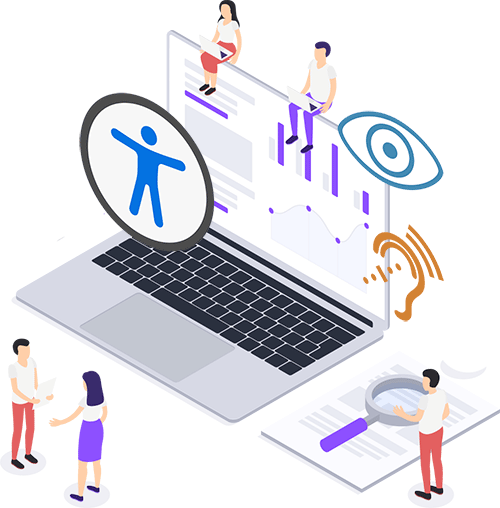
Website ADA Compliance Services: AI-Powered Fully Automated Web Accessibility.
We offer ADA and Section 508 compliance services for government, businesses, non-profit organizations, and the private sector. We evaluate Websites page-by-page and make sure all accessibility requirements comply.
Website accessibility compliance can provide an excellent experience on your site. The ADA compliance site will improve the user experience (UX) and help website search engine optimization (SEO).
Get Your Website Accessible – The Ultimate Compliance Solution from DesignsTouch.
WCAG, AODA, Section 508, EAA / EN 301 548, ACA. Built for WCAG & Section 508, Perfect for Government Agencies, Federal Contractors, non-profit organizations, Hotels and Hospitality, Banks, and Credit Unions.
What is Website Accessibility Compliance?
2010 the Department of Justice (DOJ) published the Americans with Disabilities Act (ADA) Standards for Accessible Design. According to ADA standards, all electronic and information technology must be accessible to people with disabilities.
What are WCAG Digital Accessibility Standards?
WCAG (Web Content Accessibility Guidelines)
The Web Content Accessibility Guidelines (WCAG) are the standards created by the W3 organization’s Web Accessibility Initiative (WAI) group. WCAG for all web content: Perceivable, Operable, Understandable, Robust.
There are three versions of WCAG: 1.0, 2.0, and 2.1. Version 2.0 replaced version 1.0 and 2.1. The current published version of WCAG is 2.1, released in June 2018; WCAG 2.2 is in development.
Why should every website comply with WCAG?
Not complying with WCAG standards leaves your business open to lawsuits. To enter into contracts with the government, not complying with WCAG will prevent you from being eligible. Not complying with WCAG can initiate legal action against you because some or all of your website is not accessible.
What do I have to do to comply?
To comply with WCAG, you need to have a website that satisfies all the A and AA level accessibility goals laid out in WCAG 2.0. Websites that meet the AA level WCAG 2.0 articles are considered accessible. However, all A and AA articles are the latest version of the WCAG for the highest level of litigation protection.
The number of lawsuits is growing every year. There were over 11,000 federal lawsuits in 2019 and countless more other state and local lawsuits. The Supreme Court ruling in 2019 against Domino’s Pizza solidified the legal responsibility of digital accessibility for businesses and raised awareness significantly.
What are Section 508 Digital Accessibility Standards?
Section 508 (Rehabilitation Act Refresh)
Section 508 is the United States accessibility standard that applies specifically to federal agencies’ electronic and information technology. Section 508 is an amendment to the Rehabilitation Act of 1973; Congress added this amendment in 1998 to account for changes in information technology (specifically the growing use of the internet). Section 508 guarantees access to information to federal employees and members of the general public who have disabilities comparable to the access available to others.
Who has to comply?
Currently, Section 508 is a must for federal agencies and contractors who provide services or products (with some exceptions). With contractors, Section 508 applies specifically to the products and services they provide for or on behalf of federal agencies.
What happens if I don’t comply? And who enforces it?
An entity that fits one of those descriptions, non-compliant websites, digital documents could result in a complaint with the Justice Department, per Section 504 of the Rehabilitation Act.
What do I have to do to comply?
To ensure compliance with Section 508 is to ensure that your website meets AA-level WCAG 2.0, as Section 508 requirements follow WCAG 2.0 as of the Section 508 that went into effect in January of 2018. A high-level overview of the 508 on the United States Access Board website.
What are Section ADA Digital Accessibility Standards?
ADA Title III (Americans with Disability Act)
The Americans with Disabilities Act or ADA United States law was passed in 1990 for U.S. citizens with disabilities. The equivalent of the 1964 Civil Rights Act, which prohibited discrimination based on race, color, religion, sex, or national origin.
The ADA similarly bans discrimination based on disability. It is an applicable law covering employment, public services offered by state and local governments, public accommodations and services operated by private entities, telecommunications (including internet), transportation, and more. The ADA was amended in 2008 when the Americans with Disabilities Act Amendments Act (ADAAA). This amendment changed the definition of “disability,” expanding the number of significant activities considered crucial to everyday life from 9 to 19. It restricted the types of disability, which once included medication and broad categories of medical and assistance efforts, are now limited to glasses and contact lenses.
Most critical for this overview is the ADA’s Title III, the section that requires “nondiscrimination based on disability by public accommodations and in commercial facilities.” This section of the law applies to websites, digital documents, and computer and mobile applications.
Who has to comply?
Organizations that offer publicly accessible accommodations and services must comply. It covers the majority of the privately-owned businesses and nonprofit entities with direct interaction–virtual or physical–with the public.
What happens if I don’t comply? And who enforces it?
If your website, digital documents, or other electronic products and interfaces do not comply with the ADA and are not accessible to people with disabilities. In that case, you run the risk of a civil lawsuit resulting in a monetary settlement. Suppose an individual has problems accessing your website or other digital products and services. In that case, they could sue and the courts and enforced by the U.S. justice system.
What do I have to do to comply?
Ensuring that your products and services are Level AA WCAG 2.1 compliant is an excellent way to start.
What are AODA Digital Accessibility Standards?
AODA (Accessibility for Ontarians with Disabilities Act)
The AODA law is specific to the Canadian province of Ontario. Its accessibility standards for organizations operating in Ontario.
Who has to comply?
All public, private or non-profit organizations with 50 or more employees should comply.
What happens if I don’t comply? And who enforces it?
Not complying can result in fines. The government of Ontario will enforce the AODA standards.
What do I have to do to comply?
To comply with AODA, all websites and web content posted after January 1, 2012, must meet WCAG 2.0 Level A. Beginning January 1, 2021, all public websites and web content must meet WCAG 2.0 Level AA, except 1.2.4 (Captions for live audio content in media) and 1.2.5 (Audio Description for prerecorded media).
What are ACA Digital Accessibility Standards?
ACA (Accessible Canada Act)
The ACA law is accessibility standards and enforcing accessibility. It does not map the accessibility standards. The Accessible Canada Act (formally “An Act to ensure a barrier-free Canada”) is a law that is a set of criteria.
Who should comply?
Public organizations, private, non-profit organizations federally regulated should comply with standards developed by the ACA-created committees.
What happens if I don’t comply? And who enforces it?
There are no standards set to comply. However, non-compliance can result in compliance orders, violation notices, warnings, penalties, and administrative monetary penalties. The Accessibility Commissioner will enforce the standards (a position created as a result of the ACA).
How to comply?
At the current time, there are no standards set. However, it is probably a good idea to follow the model mapped out by the AODA and meet WCAG 2.1 Level AA.
What are EN 301 549 Digital Accessibility Standards?
EN 301 549 (European Union)
EN 301 549 is the European Union’s standard that accessibility requirements for information and communications technology (ICT) used in public and governmental works in countries belonging to the European Union. Like Section 508 in the United States, the application of EN 301 549 is broad; The requirements for both physical and digital technology
Who should comply?
EN 301 549 applies primarily to government entities and to contractors who produce information and communications technologies for government entities.
What happens if I don’t comply? And who enforces it?
EN 301 549 is a voluntary standard. There is currently no requirement for compliance and no enforcement.
How to comply?
To comply with EN 301 549, websites, digital documents, and other digital products must meet WCAG 2.1 Level AA.
What are IS 5568 Digital Accessibility Standards?
IS 5568 (Israeli Standard)
Israeli Standard 5568 is Israel’s web accessibility standard. It follows WCAG 2.0 Level AA.
Who should comply?
Anyone who provides a service to the general public must conform to IS 5568. It includes government, private, and non-profit organizations.
What happens if I don’t comply? And who enforces it?
Sanctions for violations of IS 5568 are designed under the Equal Rights for Persons with Disabilities Law, 5758-1998, and include fines. The Israeli Ministry of Justice enforces the standard and laws governing it.
How to comply?
To comply with IS 5568, your website, digital documents, or application must meet the IS 5568 Web Content Accessibility Guidelines Level AA. It is identical to the W3C Organization’s WCAG 2.0 Level AA.
Does AI-Powered Fully Automated Accessibility or overlays offer 100% accessibility compliance?
Though AI-Powered Fully Automated Accessibility, you can achieve 100% compliance for some websites, there are limitations. There is not a single overlay today that can guarantee 100% compliance for all websites. There are limitations of what an overlay solution can provide, whether they are AI-driven or not. Overlays will not update PDF documents and will not remediate third-party content in iframes. If you need to ensure 100% compliance, we do offer auditing and certification services. Please get in touch with us for more information.
Make your Website Accessibility compliance with DesignsTouch.
Get in Touch
We supply the tools you need to grow your business! From idea to design and development to care and support, count on us to achieve the results your company deserves.
Contact us today to learn how we can help you transform your business.
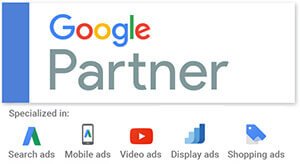
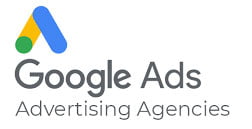

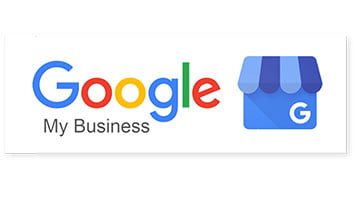
Racine, Wisconsin
DesignsTouch
201 Sixth Street, Ste 401
Racine, Wisconsin 53403
Send us an email
info@designstouch.com
Milwaukee, Wisconsin
DesignsTouch
930 E Knapp St. #25
Milwaukee, WI 53202
(414) 928-5111



